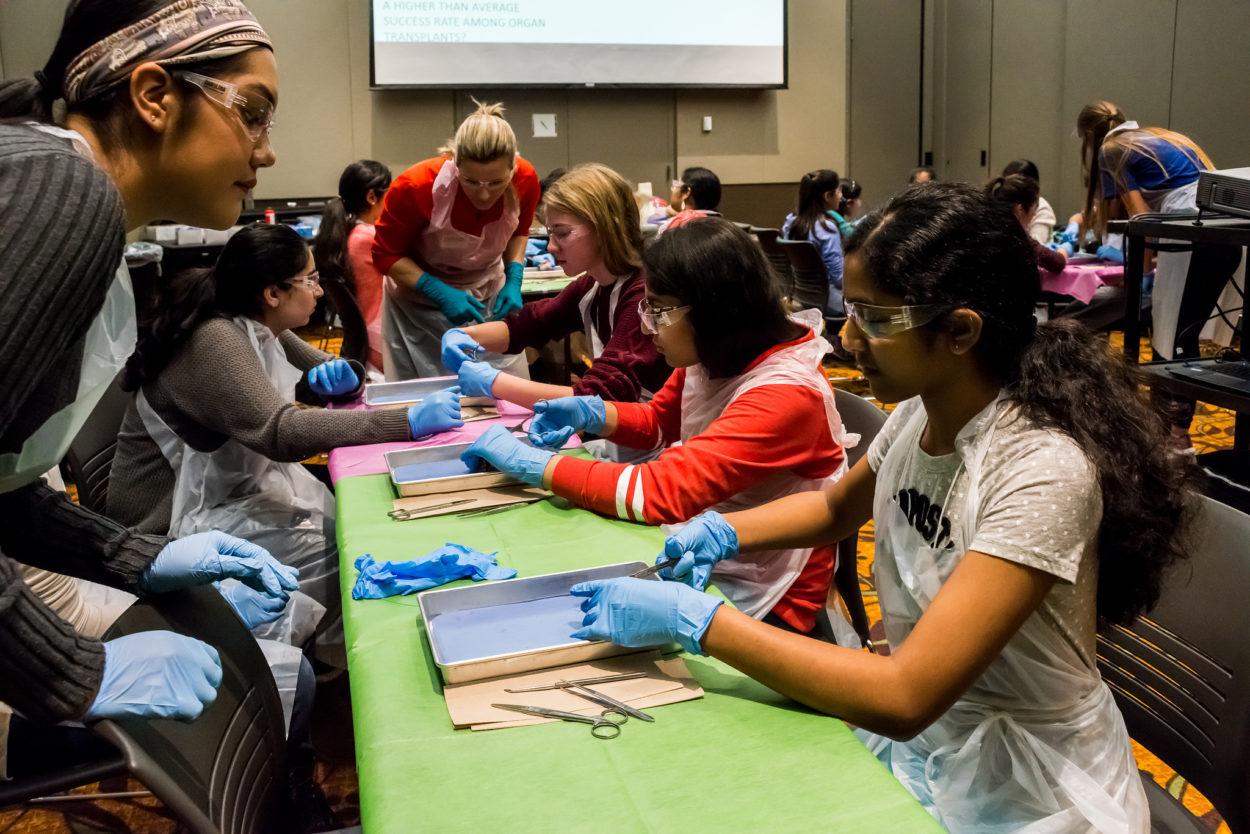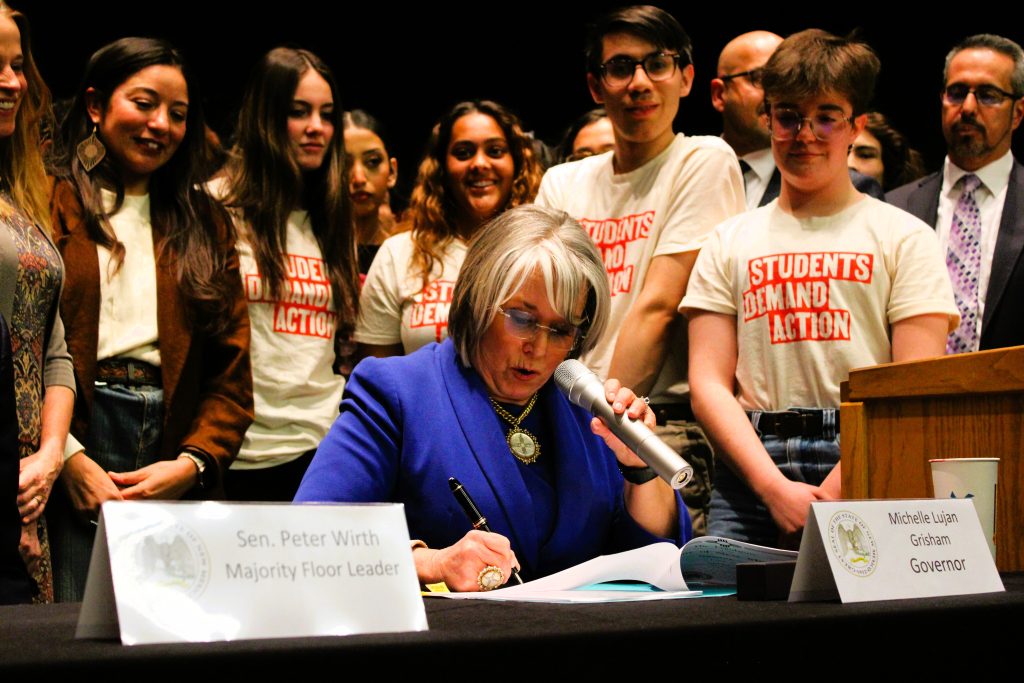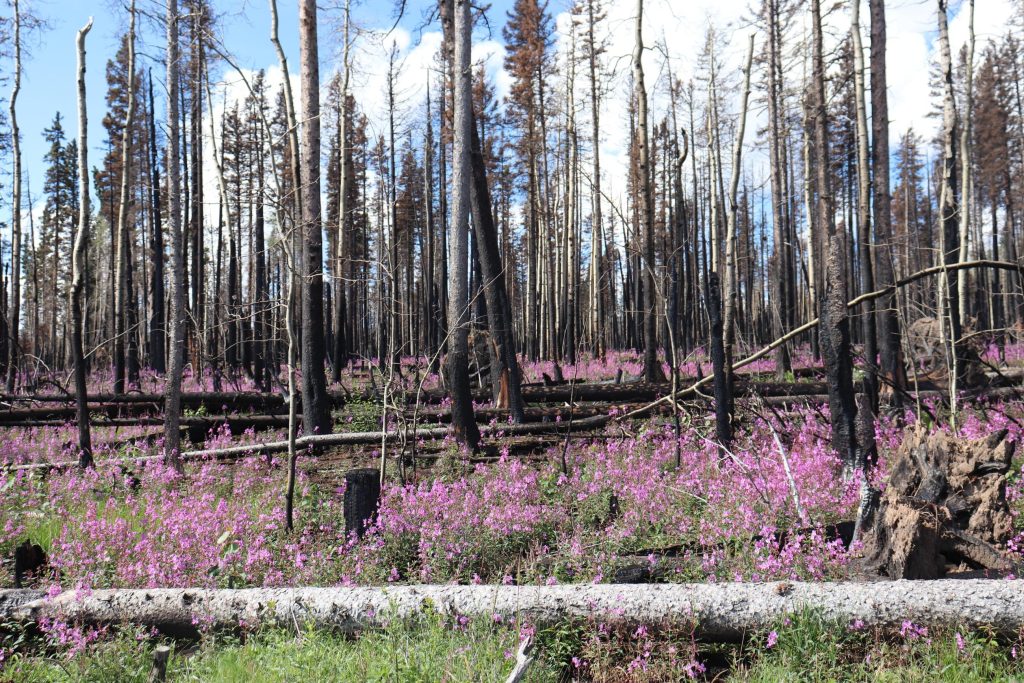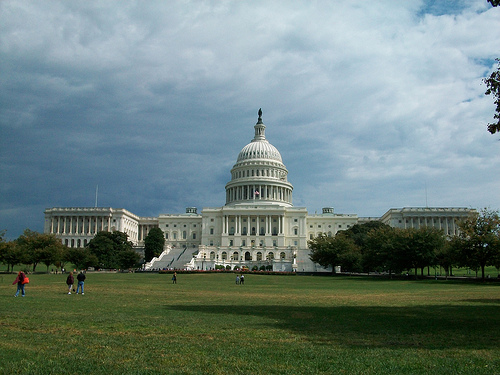Giving New Mexico’s students better opportunities to understand science, technology, engineering and mathematics—and preparing them to lead the way in STEM-related careers, from physics and hydrology to video game design and civil engineering—will require real change in classrooms, beginning in the earliest grades.
But in the last few years, Gov. Susana Martinez has been sending mixed messages.
In 2015, Martinez announced that the state would bump spending on STEM programs by $2.4 million, or 20 percent. That money would go toward hiring more STEM teachers and providing a $5,000 stipend for math and science teachers in rural or underserved areas. At the time, Martinez said that the “future of the state’s economy depends on having an educated workforce that can meet the needs of employers in the years to come.”

But earlier this year, Martinez vetoed a bill that would have required the state’s teachers to follow the Next Generation Science Standards. Those national standards were developed by teachers and other experts, and have been adopted by 18 states and the District of Columbia. In some states, officials have balked, worried about the inclusion of topics like evolution and climate change.
In her veto message, the governor said the changes should be left up to the Public Education Department (PED) and don’t belong in state statute. She wrote that PED “has already been working diligently to route the standards through the appropriate vetting process” and already recommends the review and adoption of all academic standards every six years.
But state Rep. Bill McCamley, D-Mesilla Park, still doesn’t understand why she vetoed that bill, which would have updated the state’s 14-year old standards. McCamley co-sponsored the legislation with fellow Democrats Rep. Andres Romero, a teacher from Albuquerque, and Rep. Christine Trujillo, a retired teacher also from Albuquerque.
The next governor, McCamley said, will need to understand how vital STEM education is for New Mexico’s students and for the future of the state. “For every person with a higher education degree or certificate in a STEM field, there are 2.1 jobs open for you. For everyone else, there are 3.3 people looking for a job,” he said. “It shows the disconnect between the types of skills people tend to have versus what the national labs, engineering companies, research companies, are all going to need.”
High interest, low readiness
According to the ACT, the company that administers college entrance exams, the percentage of graduating New Mexico students who took ACT tests and said they’re interested in STEM increased by three percent, to 57 percent, between 2012 and 2016. That’s a total of 7,690 graduates in 2016.
But of those students, only 15 percent met ACT’s benchmarks for STEM readiness in college. The national average is 26 percent.
Those are demoralizing numbers, said Selena Connealy, education and outreach manager for New Mexico EPSCoR, or “Established Program to Stimulate Competitive Research.” The organization, a partnership between the state and the National Science Foundation, funds research and builds relationships between universities, the national labs and private industry.
But, Connealy said, the numbers also reveal an opportunity: Many of New Mexico’s students are interested in science, technology, engineering and math careers. “We also need to use that [study] to say, ‘People are interested,’ and recognize they want to do this,” she said. “So how can we make sure the systems we put in place around them can help them succeed?”
New Mexico’s “to-do” list on STEM efforts is lengthy and complicated: New Mexico parents need job security so students can be well-fed, well-rested and ready to learn at school. Science should be taught not only in the later grades during which tests and evaluations are administered, but in elementary school. The state also needs more STEM teachers, and all teachers need training and support. Schools need adequate equipment and supplies. After-school programs and partnerships with other organizations, like museums and businesses, are also important and need funding.
To catch up with other states, New Mexico’s science standards for public schools also need to be updated.
Last year, Connealy co-chaired the state’s Math and Science Advisory Council, which issued recommendations to Martinez and then-Public Education Department Secretary Hanna Skandera. One of the council’s recommendations was for New Mexico to adopt the Next Generation Science Standards.
The state’s teachers currently follow standards New Mexico adopted in 2003, which are based on national standards from 1996.
Embracing the NGSS would also be a signal to refocus and revitalize STEM teaching in the state, Connealy said. Not only are New Mexico’s existing standards out-of-date in terms of some of the science itself, they also fail to incorporate updated knowledge of how people learn science, how human brains work and how people make sense of the world.
Whether the subject is coding or geology, STEM fields are constantly advancing and evolving. The NGSS curriculum for teaching these fields, created by teachers and other experts, are based on the assumption that science is central to everyone’s life and that a science education will help students develop an in-depth understanding of the material as well as collaboration, inquiry and critical thinking skills.
Asking questions, communicating what you’ve learned and working with others are all “baked-in” to NGSS, Connealy said. Those are skills everyone can master.
“It’s not something we just reserve for ‘smart people’ or kids in high school—it really is something all people can engage with,” she said. “It’s important to New Mexico, whether we’re thinking about water scarcity and climate change, we’re going to have to figure these things out, as citizens, as well as those who are directly working on the issues.”
Science isn’t just for students
For 25 years, Turtle Haste has worked as a science educator in museums, parks and informal settings. Recently, she returned to the classroom, and is now a sixth-grade science teacher at Desert Ridge Middle School in Albuquerque.
“The good thing about science learning is it never stops,” she said, adding that she’s an optimist when it comes to science education. “You won’t get gloom and doom from me.”
People already unknowingly rely on scientific practices every day, Haste said, whether they’re finding the right temperature to cook dinner, tinkering with the swamp cooler, noticing how the clouds build up during monsoon season or deciding which products to buy at the store.
Science helps people understand how the world works, beyond their own beliefs. “Beliefs are important: your belief system drives you, makes you who you are fundamentally,” she said, “but science is a dialogue we can have across cultures.”
Science is a way to find common ground between people with different beliefs, she said. It’s a way of talking and thinking. “We’re so rutted in our way of looking, that we’re not seeing that science is a tool we can use to communicate.”
Debra Novak, president of the New Mexico Science Teachers Association, said that now more than ever, Americans need to be scientifically literate and be able to parse the fire hose of information and data available.
“They should be able to read an article, determine whether it is ‘junk science,’ determine if it includes ‘alternative facts’ or if the author is cherry-picking data,” Novak said. “It’s a skill we need as a society.”
Not everyone needs to be an expert. But people should be able to come to conclusions about the validity of the data they’re seeing.
Journalists have a role to play, too. Some politicians have successfully exploited the public’s confusion about atmospheric science and the impacts of human-caused climate change, for example, in part because of how the media has covered climate change.
“It is not a one-to-one argument,” Novak said, referring to news stories in which reporters have quoted one scientist and one person who casts doubt on the issue, giving equal weight to both perspectives, even though 95 to 98 percent of scientists agree that human-caused climate change is occurring.
Scientists themselves need to help boost the public’s scientific literacy. “Scientists do not tend to be the loudest voices in the room,” she said, and they should prioritize communication with the public about their research and their processes.
As for New Mexico’s students, science education isn’t currently doing enough to prepare students for the state’s future needs, Novak said. “General science content is not taught at best practices levels in most New Mexico Schools to achieve scientific literacy on a multitude of topics,” she said. “That being said, there are some amazing small scale projects and individual educators and programs that are working toward better prepared students.”
Novak added that helping students develop the skills they need requires help from beyond the classroom: “It takes incredible buy-in from the community to be fluid and nimble enough to change what is happening in our classrooms.”
A note on this story: NM Political Report reached out to various New Mexico Public Education Department (PED) experts, as well as the department’s communications director with questions and a request to interview Secretary Christopher Ruszkowski, who took the helm at PED in June. We also contacted the Office of the Governor for more information about the 2015 STEM initiative and jobs. If we receive information responsive to our requests within 24 hours of publication, we will update the story.
Correction: We updated the story to correct the number of states that have adopted Next Generation Science Standards. A total of 18 states and the District of Columbia have adopted the standards as of December 2016. You can see a map of those states here.























